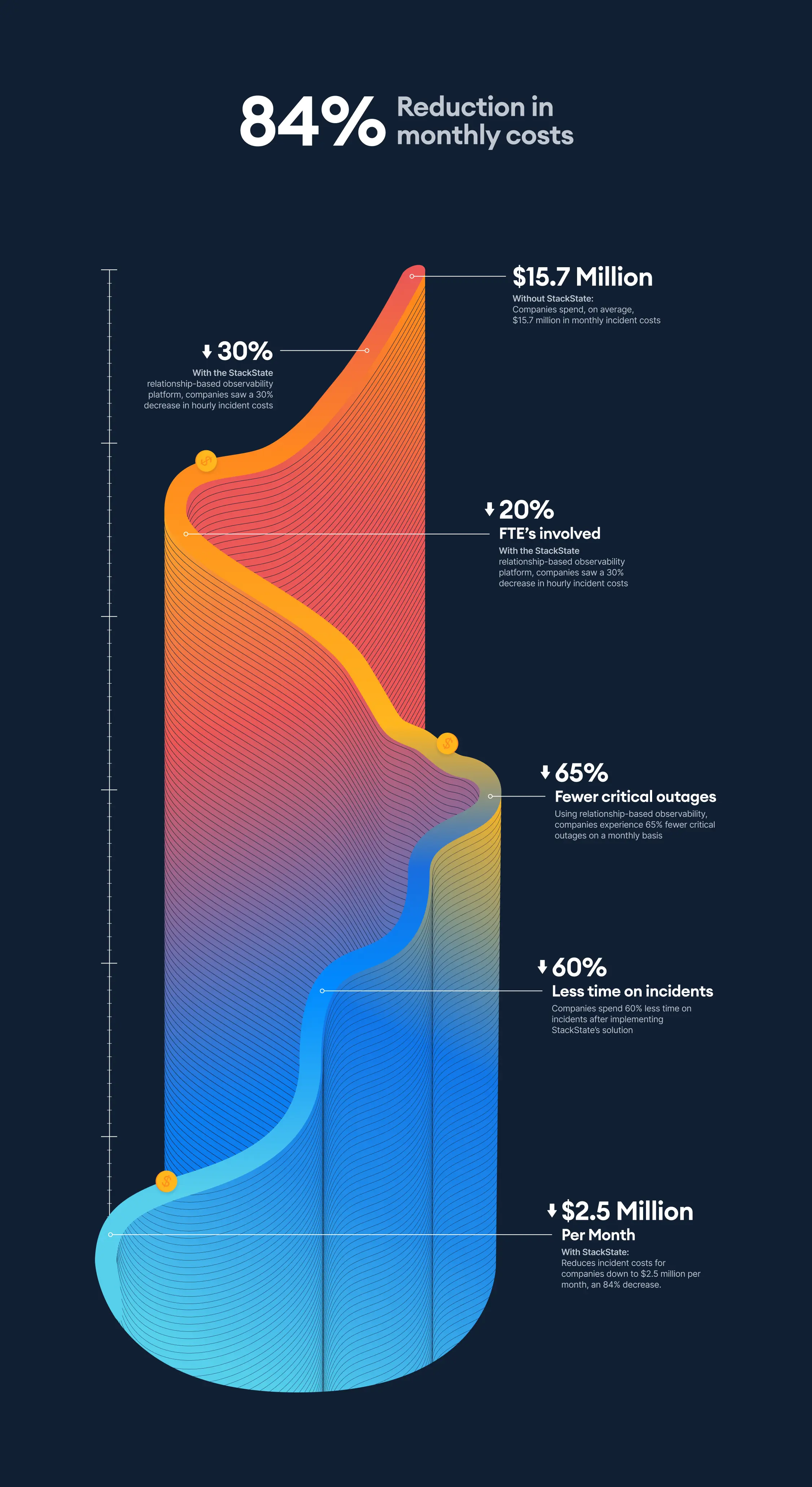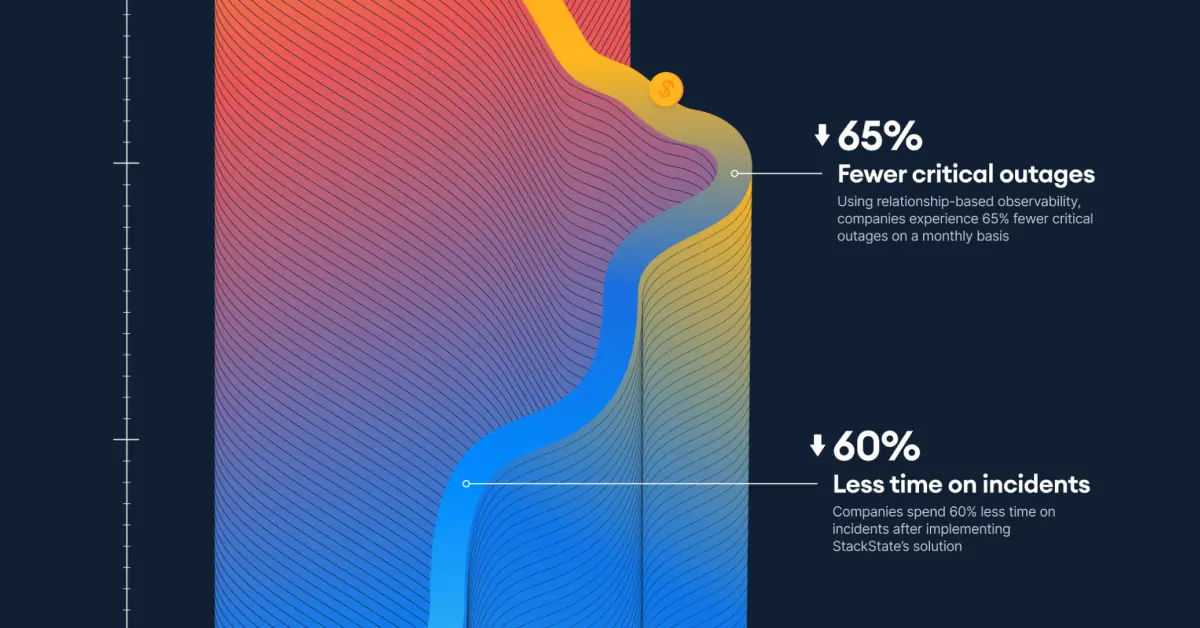These IT failures not only disrupt your organization but also cost you valuable time and money while you determine the root cause. But how much does an IT failure cost your business exactly?
We’ve compiled data in this infographic that highlights the true cost of IT failures -download this infographic here . See how you can minimize these costs by gaining real-time observability across dynamic IT environments using the StackState relationship-based observability platform.

Cost Savings Achieved After Implementing a Relationship-Based Observability Platform
Your organization can achieve cost savings in several key areas using a relationship-based observability (RBO) platform.
1. Hourly Incident Costs
Companies need to consider exactly how much IT failures and incidents are costing the business on an hourly basis.
Without StackState: Companies spend an average of $944k per hour on incidents.
RBO Impact: With the StackState relationship-based observability platform, companies saw a 30% decrease in hourly incident costs.
With StackState: StackState's platform reduces this incident cost to $660k per hour.
2. Critical Outages
System outages are the bane of any IT department. They take up valuable time and resources and cause major disruptions to the company and its clients.
Without StackState: Companies experience 5 or more critical outages per month.
RBO Impact: Using relationship-based observability, companies experience 65% fewer critical outages on a monthly basis.
With StackState: StackState reduces this number to fewer than 2 critical outages per month.
3. Incident Duration
When serious incidents strike, companies must act quickly to resolve them. To do so, they need the right data to make decisions quickly.
Without StackState: The duration of each incident is 200 minutes on average.
RBO Impact: Companies spend 60% less time on incidents after implementing StackState’s solution.
With StackState: StackState reduces this number to an average of 80 minutes per incident.
4. Full-Time Equivalents (FTEs) Involved in Incident Resolution
The FTEs involved in incident resolution are unable to focus on other key areas of the business while the resolution process is going on. More people required means fewer people available to tackle other strategic tasks.
Without StackState: Companies need more than 25 FTEs to resolve incidents.
RBO Impact: Companies saw a 20% reduction in the number of FTEs involved in incident resolution.
With StackState: Using StackState, companies can reduce the number of FTEs involved with resolution to 18.
Total Monthly Impact of the StackState Solution
Without StackState: Companies spend, on average, $15.7 million in monthly incident costs.
With StackState: StackState reduces incident costs for companies down to $2.5 million per month.
Key Takeaways
Companies can dramatically reduce the cost and time associated with IT failures by using a relationship-based observability system. After implementing the StackState topology and relationship-based observability solution, companies can see up to an 84% reduction in monthly incident costs.
Prevention is better than cure. StackState helps companies prevent IT incidents from occurring in the first place by integrating with tools like APM, infrastructure monitoring, virtualization and cloud platforms, Kubernetes, and incident management
systems.
These integrations add the power of relationships, configuration changes, and AI-based diagnostics to the incident management process, leading to deterministic root cause. This empowers your IT team to quickly prevent and solve problems and effectively reduce the cost of IT failures.
Contact us to learn how you can start reaping these benefits in your organization today.



